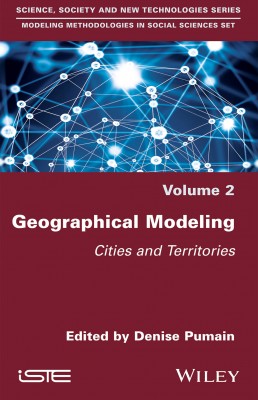
The modeling of cities and territories has progressed greatly in the last 20 years. This is firstly due to geographic information systems, followed by the availability of large amounts of georeferenced data – both on the Internet and through the use of connected objects. In addition, the rise in performance of computational methods for the simulation and exploration of dynamic models has facilitated advancement.
Geographical Modeling presents previously unpublished information on the main advances achieved by these new approaches. Each of the six chapters builds a bibliographic review and precisely describes the methods used, highlighting their advantages and discussing their interpretations. They are all illustrated by many examples.
The book also explains with clarity the theoretical foundations of geographical analysis, the delicate operations of model selection, and the applications of fractals and scaling laws. These applications include gaining knowledge of the morphology of cities and the organization of urban transport, and finding new methods of building and exploring simulation models and visualizations of data and results.
1. Complexity in Geography, Denise Pumain.
2. Choosing Models to Explain the Dynamics of Cities and Territories, Lena Sanders.
3. Effects of Distance and Scale Dependence in Geographical Models of Cities and Territories, Cécile Tannier.
4. Incremental Territorial Modeling, Clémentine Cottineau, Paul Chapron, Marion Le Texier and Sébastien Rey-Coyrehourcq.
5. Methods for Exploring Simulation Models, Juste Raimbault and Denise Pumain.
6. Model Visualization, Robin Cura.
Denise Pumain is Professor at the University of Paris I Pantheon-Sorbonne (France), co founder of the CNRS Geographie-cités laboratory and Director of Cybergeo: European Journal of Geography. She participates in the development of numerous models for an evolutionary theory of cities.